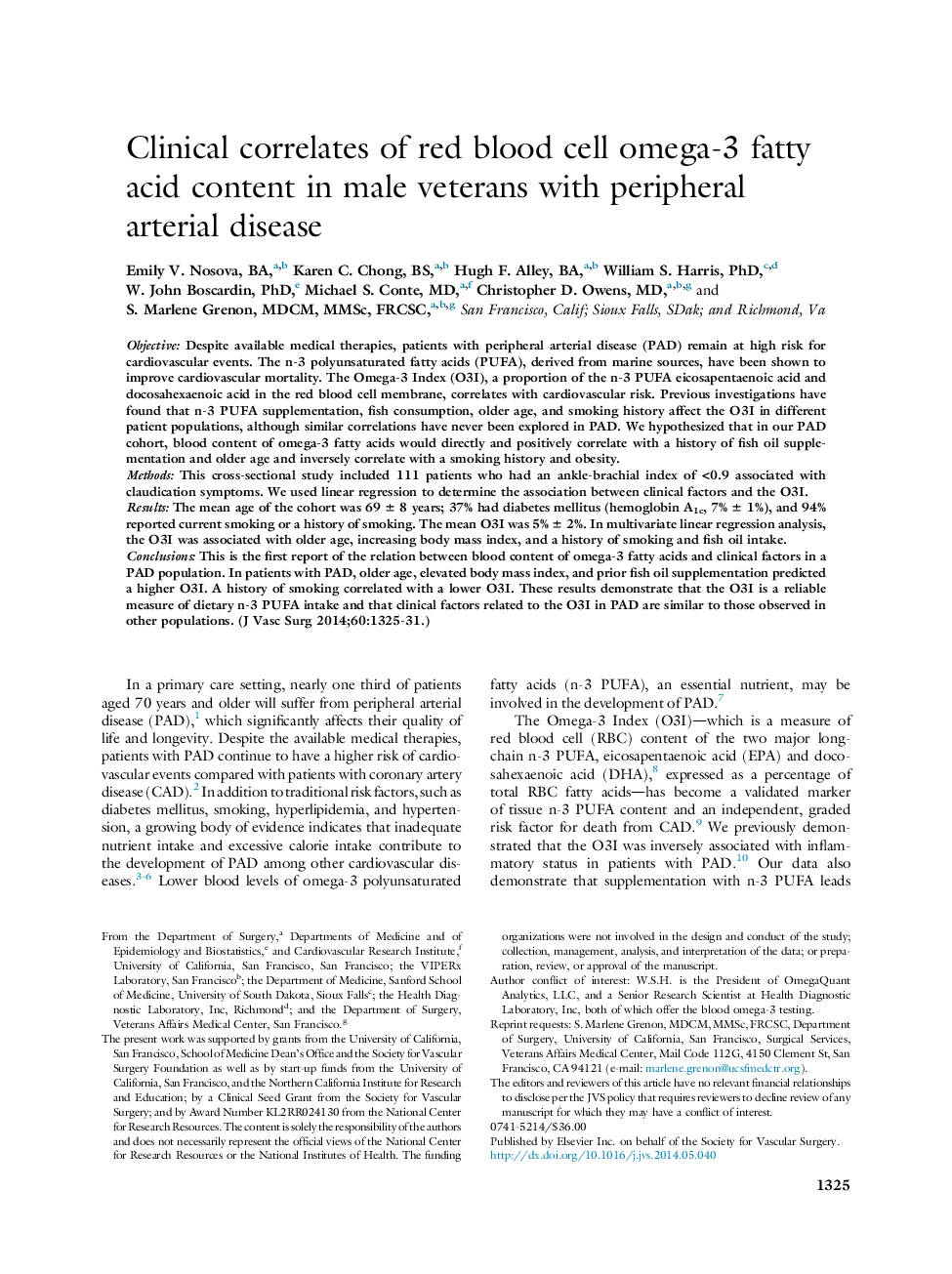| کد مقاله | کد نشریه | سال انتشار | مقاله انگلیسی | نسخه تمام متن |
|---|---|---|---|---|
| 5994118 | 1179827 | 2014 | 7 صفحه PDF | دانلود رایگان |
ObjectiveDespite available medical therapies, patients with peripheral arterial disease (PAD) remain at high risk for cardiovascular events. The n-3 polyunsaturated fatty acids (PUFA), derived from marine sources, have been shown to improve cardiovascular mortality. The Omega-3 Index (O3I), a proportion of the n-3 PUFA eicosapentaenoic acid and docosahexaenoic acid in the red blood cell membrane, correlates with cardiovascular risk. Previous investigations have found that n-3 PUFA supplementation, fish consumption, older age, and smoking history affect the O3I in different patient populations, although similar correlations have never been explored in PAD. We hypothesized that in our PAD cohort, blood content of omega-3 fatty acids would directly and positively correlate with a history of fish oil supplementation and older age and inversely correlate with a smoking history and obesity.MethodsThis cross-sectional study included 111 patients who had an ankle-brachial index of <0.9 associated with claudication symptoms. We used linear regression to determine the association between clinical factors and the O3I.ResultsThe mean age of the cohort was 69 ± 8 years; 37% had diabetes mellitus (hemoglobin A1c, 7% ± 1%), and 94% reported current smoking or a history of smoking. The mean O3I was 5% ± 2%. In multivariate linear regression analysis, the O3I was associated with older age, increasing body mass index, and a history of smoking and fish oil intake.ConclusionsThis is the first report of the relation between blood content of omega-3 fatty acids and clinical factors in a PAD population. In patients with PAD, older age, elevated body mass index, and prior fish oil supplementation predicted a higher O3I. A history of smoking correlated with a lower O3I. These results demonstrate that the O3I is a reliable measure of dietary n-3 PUFA intake and that clinical factors related to the O3I in PAD are similar to those observed in other populations.
Journal: Journal of Vascular Surgery - Volume 60, Issue 5, November 2014, Pages 1325-1331
